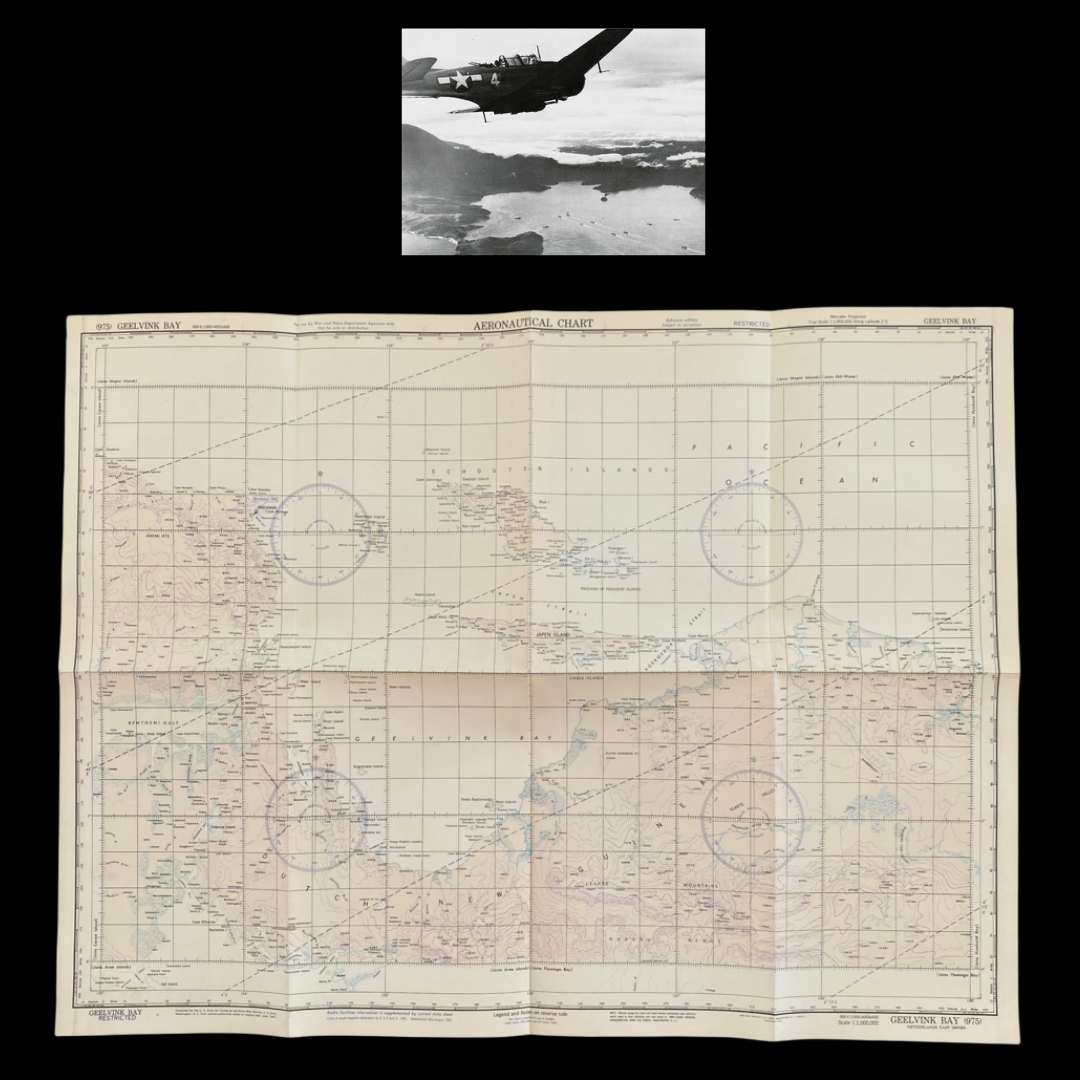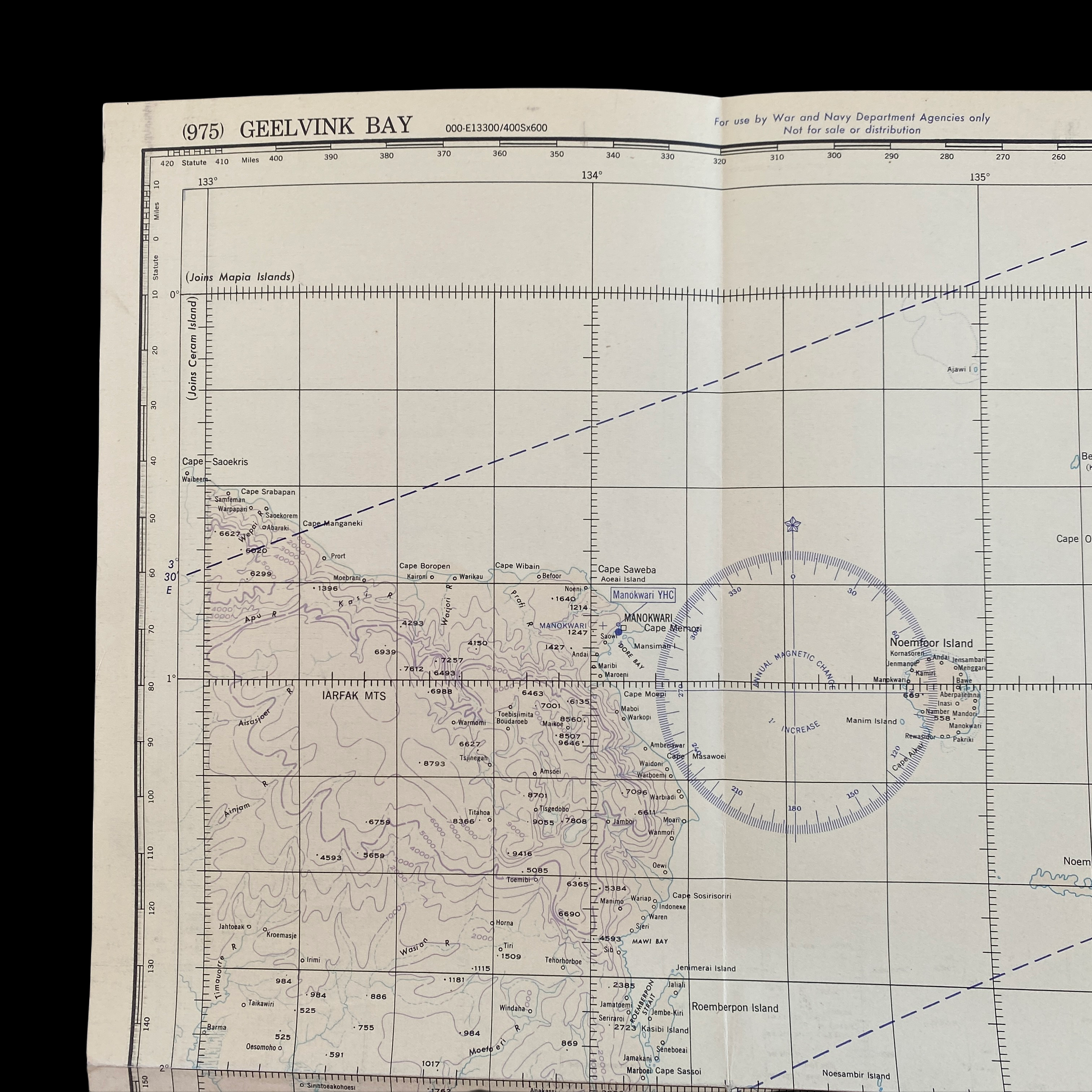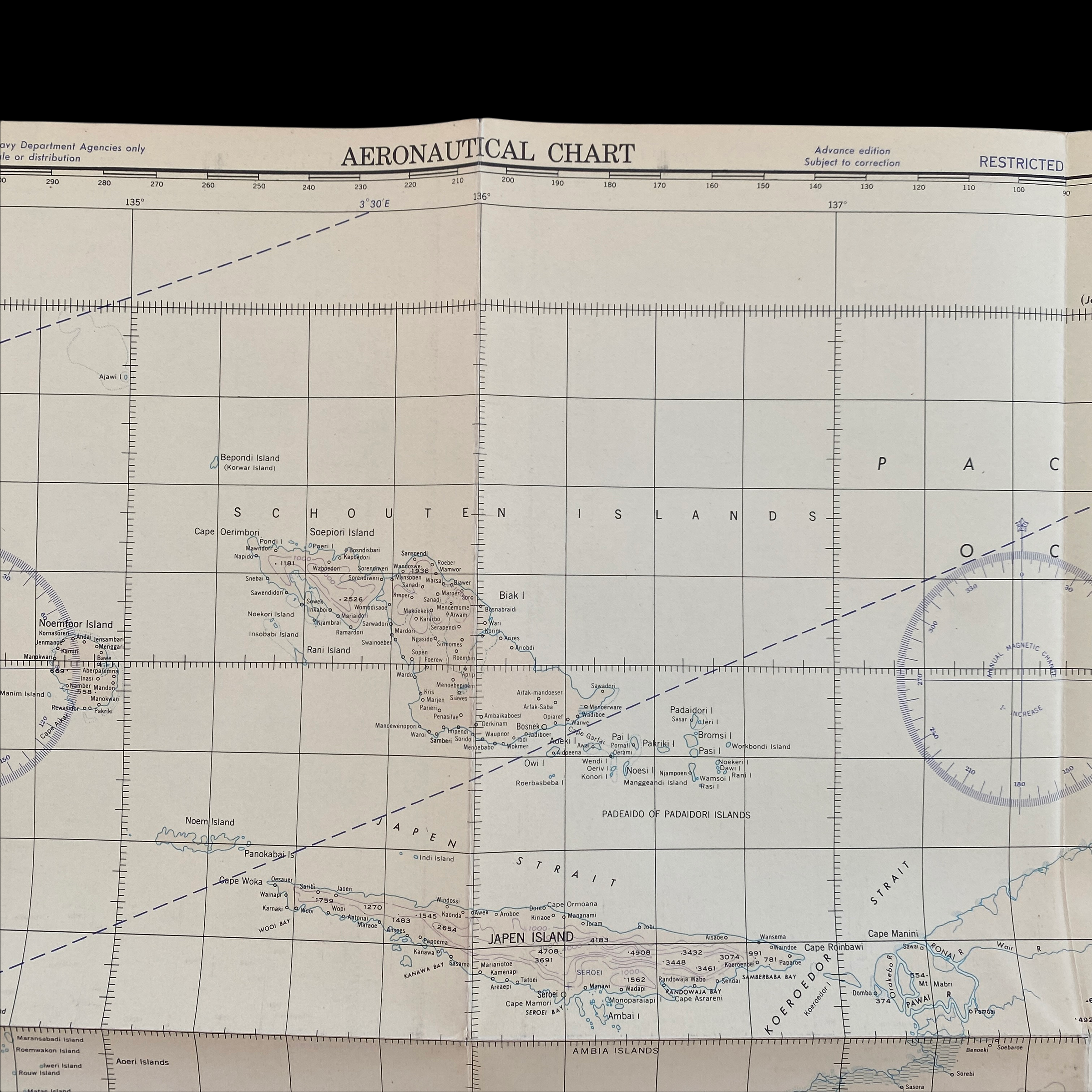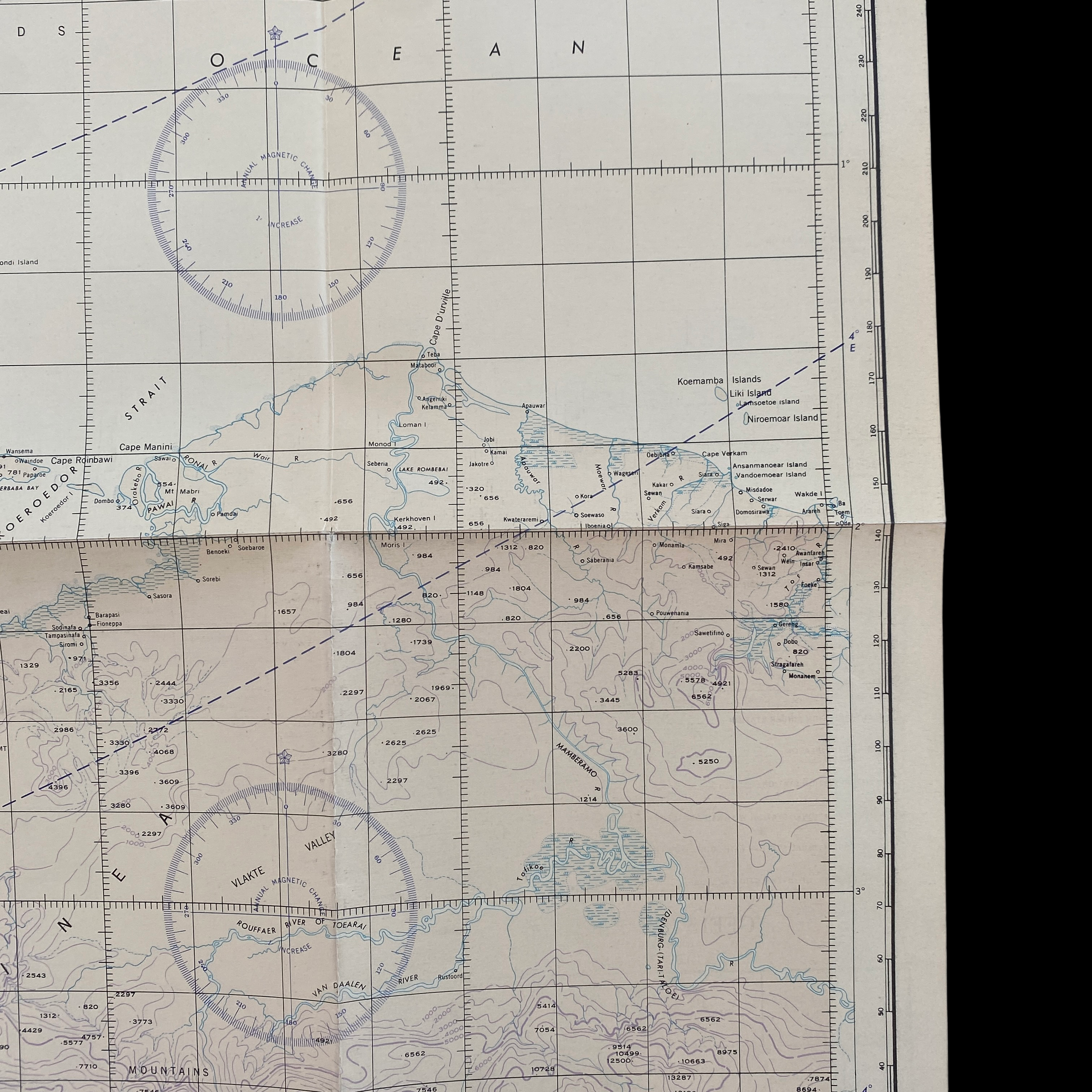RARE WWII Battle of Biak New Guinea U.S. Army Air Force Pacific Theater Combat Aircraft Navigation Map



















RARE WWII Battle of Biak New Guinea U.S. Army Air Force Pacific Theater Combat Aircraft Navigation Map
Comes with C.O.A.
Used during the New Guinea campaign and the infamous Battle of Biak. The Battle of Biakwas part of the Western New Guinea campaign of World War II, fought between the United States Army and the Japanese Army from 27 May to 17 August 1944. Taking place on the island of Biak, in Geelvink Bay, in present-day Indonesia, it was part of General Douglas MacArthur's Southwest Pacific Area's offensive drive to clear New Guinea in preparation for an invasion of the Philippines. It was the first major effort by the Japanese to allow uncontested landings for the purpose of creating a kill zone inland. The main Allied objective was to capture the island so that they could construct airfields there. The battle resulted in the capture of the island by Allied forces, which were then used to support operations elsewhere in the Pacific.
Dated 1942 and titled "GEELVINK BAY” this incredible double-sided and very rare ‘ADVANCED EDITION’ Aeronautical Chart was used for aerial navigation of the U.S. Army Air Force during WWII. Prepared under the direction of the Commanding General of the Army Air Force this map is marked ‘RESTRICTED’ while being used in the theater of operation as it contains sensitive information wartime information such as Allied air radio frequencies, vital defense areas, and the location of military facilities. While participating in combat operation missions this map would have been used for the navigation to aerial bombardment targets, aerial reconnaissance, strike attacks, search and rescue missions, transport operations, etc.
The island of Biak forms part of the Schouten Islands, and dominates the entrance to Geelvink Bay, near the western end of New Guinea; its terrain and location about 325 miles (523 km) from Hollandia and 180 miles (290 km) from Sarmi (where the Japanese had begun concentrating supply bases and airfields), made it well suited to airfield construction, particularly in the flatter southeastern area. As a result, as the Allies began their advance towards the Philippines in 1944, General Douglas MacArthur's Southwest Pacific command began planning its capture. In conceptualizing the operation, Allied planners envisaged a week-long operation; stimating that there were up to 2,000 Japanese troops defending the area.[3] Four landing beaches were chosen near Bosnek, designated Green 1, 2, 3 and 4. Allied planners considered these beaches to be poorer for landing operations, compared to those further away from the airfields, but they were chosen due to their proximity to the main Allied objectives and because aerial reconnaissance indicated that the beaches were not backed by cliffs or swamps, and that there were two jetties nearby that might facilitate deep-water port access.
The assault force consisted of five destroyer transports (APD), eight LSTs eight LCTs, and fifteen LCIs, supported by a myriad of smaller vessels including DUKWs, LCVPs and LVTs, which were chosen due to concerns about the coral reef opposite the landing beaches. These were protected by two heavy cruisers, three light cruisers, and twenty-one destroyers; several Australian vessels including the cruisers HMAS Australia and Shropshire and the destroyer Warramunga were included in this task force. The naval forces, designated Task Group 77.2, were commanded by Rear Admiral William Morrow Fechteler. Close air support for the Allied operation was provided by Lieutenant General George C. Kenney's Fifth Air Force, operating from Hollandia and Wakde Island, although elements of the Thirteenth Air Force, as well as Australian and Dutch squadrons operating from as far away as Darwin, also provided strategic air support.
Allied intelligence greatly under-estimated the number of troops holding the island. The island was held by 11,400 Japanese troops under the command of Colonel Kuzume Naoyuki. Initially, the majority of the combat troops (about 4,000 personnel), were drawn from the veteran 222nd Infantry Regiment which had previously served in China, along with tanks from the IJA 36th Division, supported by artillery, anti-aircraft, construction and naval guard and base troops under Rear Admiral Sadatoshi Senda. These troops were reinforced by elements of the 35th Division's 219th and 221st Infantry Regiments.